

Ted Geary R-Boat PIRATE
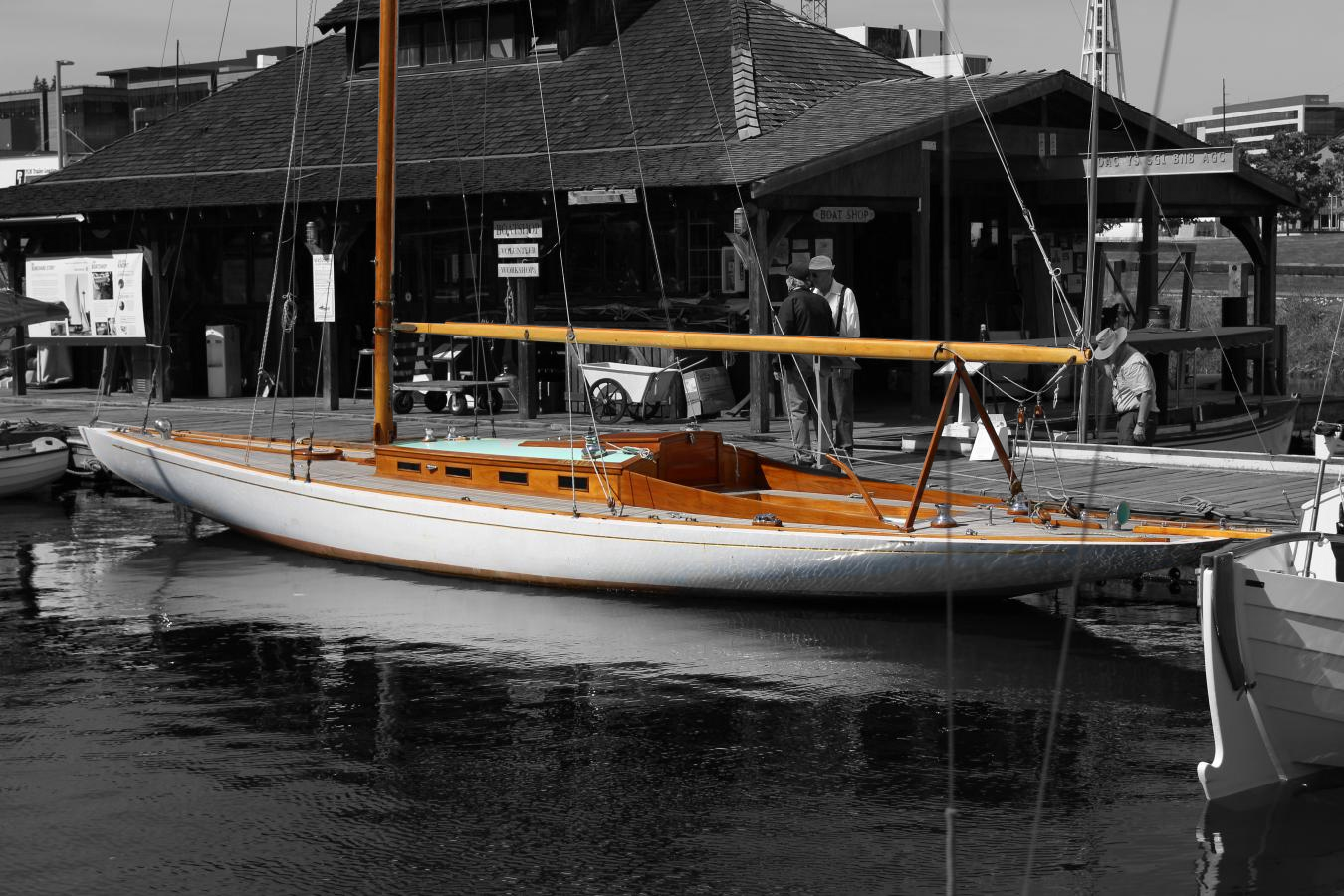
Sail Number: R-ll
Type: Marconi 3/4 Rig Racing Sloop
LOA: 40′ 3″ / 12.26m – LOD: 40′ 3″ / 12.26m – LWL: 25’0″ / 7.62m – Beam: 8′ 6″ / 2.59m – Draft: 5’5″ / 1.65m – Displacement: 10,900 lbs – Hull material: double-planked hull Burma Teak / steam-bent white oak -Sail Area: – Designer: L.E. “Ted” Geary, Seattle, Washington – Built by: Lake Union Dry Dock, Seattle, Washington – Year Built: April 10, 1926 – Current Name: Pirate – Location: Seattle, WA – Flag: USA – Locator: Museum exhibit
Historical:
One of the fastest R-boats ever built.
Pacific coast R-boat racing began in Seattle in 1913 when Sir Thomas Lipton donated a lavish silver cup to be the prize for the class. The following year, after defeating would-be American defenders Spray and Defender, Ted Geary’s Sir Tom (so named to honor the cup’s donator) dominated Turenga from Royal Vancouver Yacht Club to capture the cup. Geary and Sir Tom went on to win the Lipton every year until 1928.
“My dad promised me an R-boat if we won the coast championship this year, and we did the best possible.” – Tommy Lee
In the spring of 1925, yachtsman Don Lee of Los Angeles challenged his son Tommy to win the Pacific Coast Star Championship with the promised prize of a new R-boat. Tommy Lee sailed his Star Satellite to victory at the Pacific Coast Yachting Association (PCYA) regatta in Victoria, British Columbia, and true to his word, Don Lee commissioned Pirate for his son.

Comments from the Center for Wooden Boats – Pirate is a direct development of Geary’s legendary Sir Tom, a perennial West Coast R-Class champion. In her first year of racing Pirate won the prestigious San Diego Lipton Cup for the Balboa Yacht Club.
Pirate is widely acknowledged as the first yacht, designed and built on the West Coast, to compete on the Eastern Seaboard. in !929, she was shipped to New York. Matt Walsh, skipper of the R-boat California, steered her to dominate a large fleet of Rs at the Larchmont Yacht Club, taking the class National Championships in convincing style.
Restoration & Improvements
Shortly after the 1932 installation of the engine and propeller shaft, Ted Geary had them removed to prepare the boat for more serious racing. In addition, he redesigned the boat’s sail and rigging plans to allow the use of flatter Genoa jibs sheeted closer to the mainsail. This was popularly known as the “Diamond Rig” by sailors of the time. The spreaders were moved to a point halfway between the forestay and the deck. The top attachment point of the upper shrouds was moved down to the forestay connection. A set of upper diamond struts measuring the same length as the spreaders were added at the same place. To control tip bend fore and aft, a jumper strut was fitted from the forestay tang to the head stay, and a smaller jumper was rigged on its own stay above the forestay. The foretriangle height (P2) was increased from 31′ to 35′-4″, while the base (J) was kept at 10′. This increased area forward in the plan was offset by a reduction of 14″ off the foot of the mainsail, while the gooseneck was raised 18″. At the same time, an 18″ boomkin was added at the stern to attach a standing backstay. This brought the overall length of the vessel to 40′-3″. The last additions were jib sheet winches at the aft end of the house top, port and starboard, to trim the larger jibs.
R-boat Pirate, fully restored from 1999 to 2005, is the best extant example of the R-class. Pirate also embodies the most advanced skills and talents in both yacht design and construction in the Seattle area in the early twentieth century.
From 1999-2005, The Center for Wooden Boats undertook a restoration of Pirate. The boat is moored year-round at the CWB and serves as an active, floating exhibition. A dedicated group of volunteers manages the boat and sails it to heritage events within the region. To support the Center for Wooden Boats, click here. http://cwb.org/join-support/
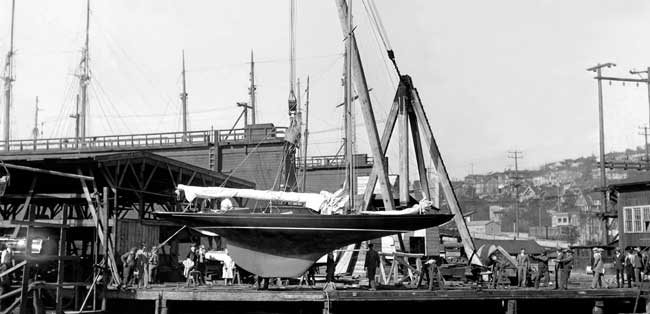
Provenance (The Wall of Remembrance – The Owners, Crew & Notable Guest):
Owner: (1926-1928) – Don and son Tommy Lee (Don Lee owner of (1924-1929) Schooner Invader ) Owner: (1928-1929) – Roger Marchetti Owner: (1929-1932) – O.K. Hunsaker Owner: (1932-1934) – Arthur Stewart, son of William L. Stewart (late president of Union Oil Company of California) Owner: (1934-1952) – Mrs. Rhoda (Rindge) Adamso Owner: (1952-1964) – Merritt Adamson, Jr. and Sharon (the daughter of Ted Gear) Adamson (gifted) Owner: (1964) – Brooks Barnhill and Morton Caplan, Los Angeles. Owner: Mrs. Adele Jacobson of Oxnard, California Owner: (late 90s) – Blue Whale Sailing School of Santa Barbara (donated) Owner: (current) – The Center for Wooden Boats, Seattle, WA (donated)
The Center for Wooden Boats The Model Shipwright
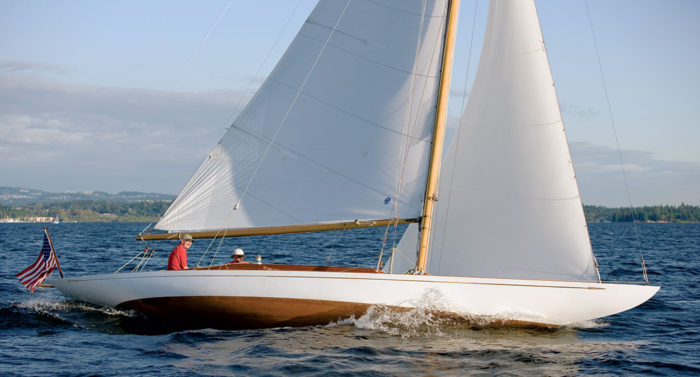
Related posts:
- William Fife III LATIFA
- N.G. Herreshoff Buzzards Bay 30 MASHNEE
- Sparkman & Stephens NORA
- L.F. Herreshoff “Quiet Tune”
Leave a Comment Cancel
Your email address will not be published. Required fields are marked *
Email Address:
Save my name, email, and website in this browser for the next time I comment.
This site uses Akismet to reduce spam. Learn how your comment data is processed .

SailingEurope Blog - Sailing, Yacht Charter and Beyond
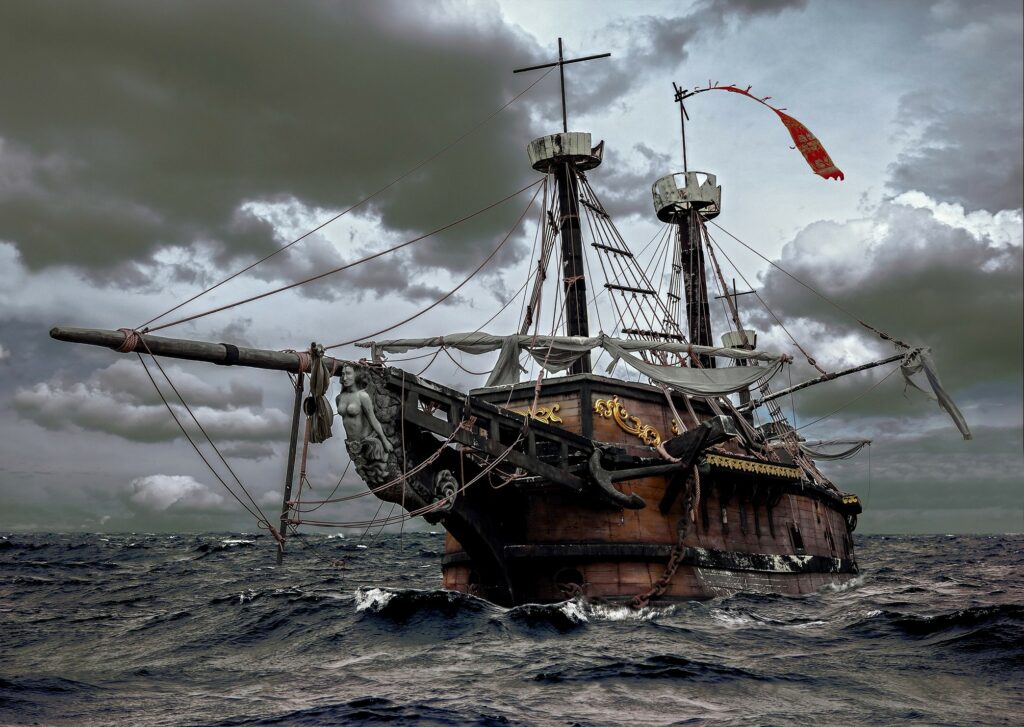
The Notorious Pirate Ships and Their Sailing Stories
From 1680 to 1725, the so-called “Golden Age of Piracy” put the world’s trade at risk. This was the moment in history when pirate sailing became so flagrant that the most talented pirates the world had ever seen pillaged numerous trading ships carrying vast quantities of treasure and valuable goods. During that period, famed pirate captains like Blackbeard, Calico Jack, and Black Bart rose to prominence, acclaimed for their naval military forces as well as for victoriously overcoming merchant ships.
One of the things that made them intimidating were their renowned flagships, expertly designed not only to survive the roaring waves of the world’s roughest oceans but also to defeat their naval foes through the barrels of their formidable cannons. These types of pirate ships were so terrifying that they reminded you of Captain Jack Sparrow’s legendary pirates of the Caribbean boat, Black Pearl. So, set sail and take a look back at some of the most dreadful pirate ships in history.
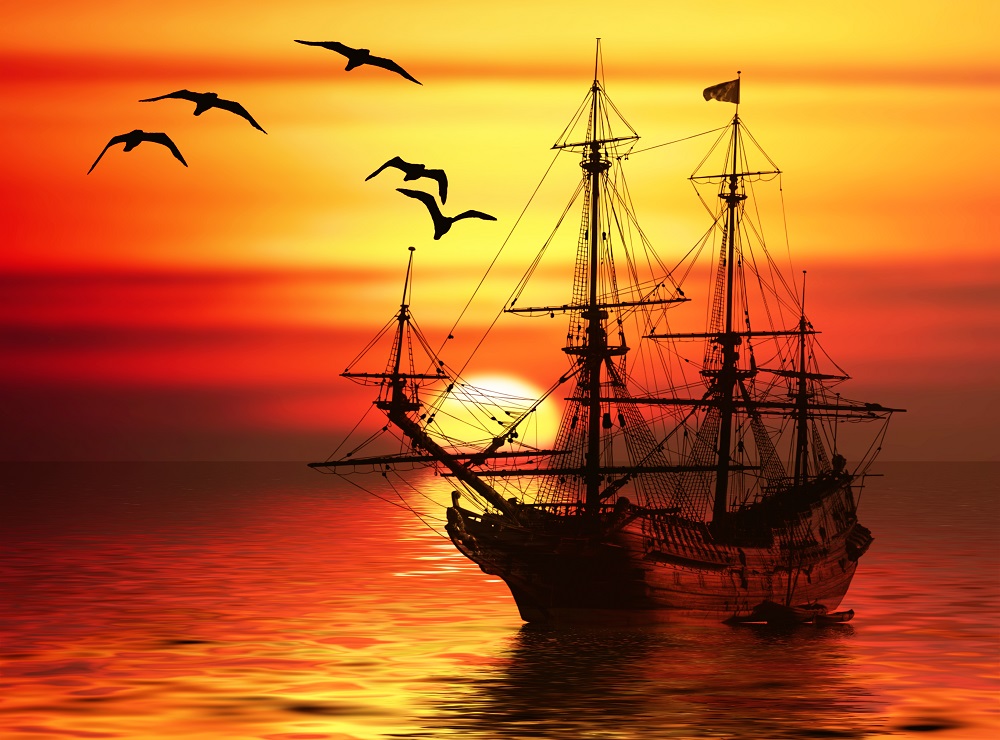
Queen Anne’s Revenge
There is no doubt that the famous Blackbeard flagship, Queen Anne’s Revenge, was one of the most famous pirate ships of all time. In November 1717, Captain Benjamin Hornigold captured a 300-ton frigate in the eastern Caribbean, originally a slave ship named Le Concorde de Nantes. Captain Pirate Hornigold gave this ship to his first mate, Edward Teach – Blackbeard. He renamed the pirate boat “Queen Anne’s Revenge”, upgraded her, armed with 40 cannons, and carried 150 pirates. With Queen Anne’s Revenge, Blackbeard performed one of his famous acts. He blocked the city of Charleston and captured eight valuable vessels. Queen Anne’s Revenge was also famous for its sea-battle victory over a powerful warship, His (or Her) Majesty’s Ship “Scarborough.”
In June 1718, the Queen Anne’s Revenge hit a sandbar right off North Carolina, leading the crew to abandon the ship. Captain Blackbeard took the opportunity to make off with all the loot and a select few of his favorite pirates, leaving the others to fend for themselves. Many people believed that the famous pirate deliberately scuttled his pirate sailing ship because he went legit after that. He was apparently a privateer, a robber who worked for the state for a while. Privateers used to receive the so-called Letter of Marque and Reprisal, government permission allowing one to assault and seize hostile vessels. Since the punishment for piracy was immediate death, hanging such a letter could save sailors from certain death, since their home nation treated them as prisoners of war.
Despite that, Blackbeard returned to his old ways, and on November 22, 1718, pirate hunters killed him in a pitched battle right off North Carolina. The wreckage was discovered in 1996.
Blackbeard was one of the most devious and ruthless pirates who tormented the waters of the Atlantic and the Caribbean. Although his pirate sailing adventures might not have extended for decades, Edward Teach still made his way into pirate history.
Another famous pirate ship from that time was Kingston. A former merchant ship captured by John “Calico Jack” Rackham . His nickname originated because of his taste in brightly colored calico cloth. He started his career as the quartermaster of the renowned pirate captain Charles Vane.
During one of many battles, the ship’s crew declared Captain Vane a coward and voted Calico Jack as the new captain . The new crew marooned Captain Vane and his supporters ashore. Now, as the captain, he started attacking small vessels around Jamaica. One of the bigger prizes was the ship Kingston. Calico Jack made it his flagship. Unfortunately for him, he took Kingston within sight of Port Royal, where outraged merchants outfitted bounty hunters to go after him. They caught up with him while his ships and the Kingston dropped their anchors at Isla de Los Pinos, right off Cuba. Rackham and most of his men were onshore at the time, escaping capture by hiding in the woods. Unfortunately, they lost all their pirate ships and rich trophies.
Rackham and his men made their way to Nassau, where they appeared before Governor Rogers and asked for a royal pardon , claiming that Vane had forced them to become pirates. Rogers hated Vane and chose to believe them, granting them a pardon and allowing them to stay. Their time as honest men, however, did not last long. Soon after returning to Nassau, they were declared pirates again and all sentenced to die.
An interesting story about this ship is that it had two female pirates on the crew, both cross-dressed as men. Anne Bonny, probably the most famous female pirate, was the captain’s lover and he took Mary Read during one of the attacks as part of the merchant ship crew.
Royal Fortune
Bartholomew Roberts, one of the most successful pirate captains , also known as Black Bart, holds the record for most ships successfully plundered. Except for this record, he was also known for being a cruel, cold-hearted pirate. Once, he burned 80 slaves inside a captured slave ship because he considered it a waste of time to unshackle those people.
In 1720, he captured a French ship and renamed it Royal Fortune. It was the same name that he used for every ship he captured. The refitted ship had 42 cannons, and the new crew consisted of 157 men. This armament made it a dangerous opponent for any Royal Navy ship in the area. Royal Fortune sailed to Africa looking to increase profits in slave trading.
After arriving in Africa, Roberts captured a ship named Onslow, which he renamed Royal Fortune, after abandoning his old pirate sailing ship due to a rotting hull. Captain Roberts’ fame ended in 1722 when the navy vessel Swallow attacked the last Royal Fortune. The ship was anchored near Cape Lopez when the fight broke out. Captain Roberts died early in the battle. The Royal Navy successfully captured the Royal Fortune and a few other smaller ships from the Black Bart fleet. His death shocked many merchants and the Royal Navy as he was considered very dangerous and practically invincible.
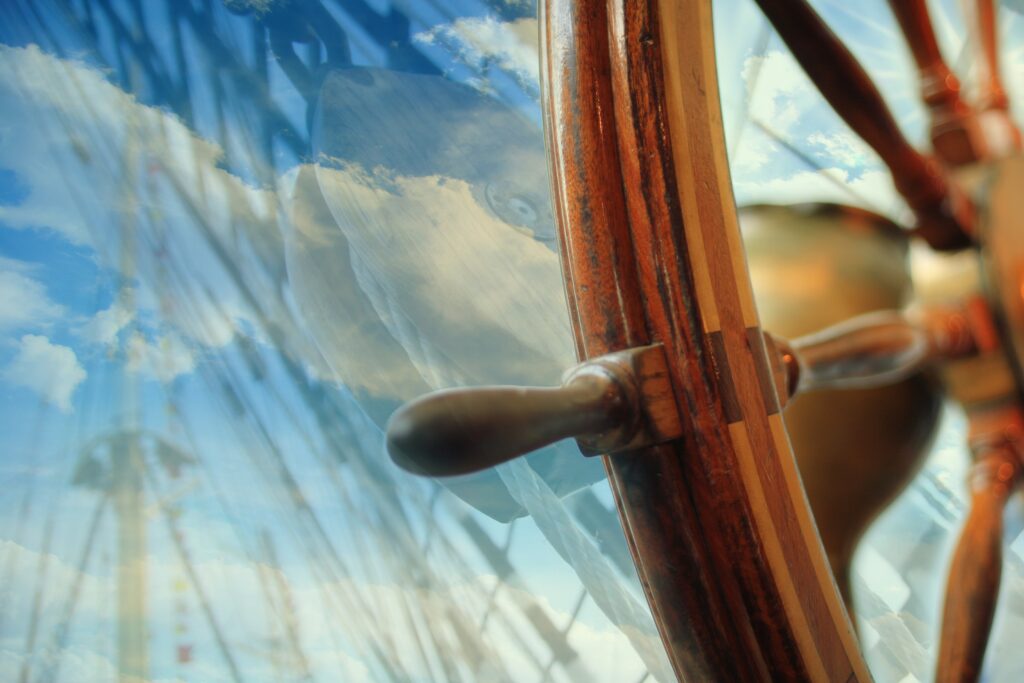
Stede Bonnet’s career as the “ Gentleman Pirate ” may represent the worst midlife crisis on record. Aside from being educated, he was also a retired major and owner of a plantation in Barbados. One of the reasons he started pirate sailing were financial problems, perhaps due to a hurricane, drought, or other natural disaster wiping out his sugar crop. Unlike most pirate captains, he bought a sloop with his own money. He named this sloop Revenge and outfitted it with ten cannons. After hiring 70 men as his crew, he set out for piracy. Despite his inexperience, he successfully attacked several ships.
During sailing in the Caribbean, Revenge encountered Queen Anne Revenge. Captain Teach and Bonnet formed an alliance. After they set sail, Blackbeard realized he was dealing with an amateur and decided to seize Bonnet’s command. He kept Bonnet aboard Queen Anne’s Revenge and sent his first mate to take over Bonnet’s ship with the consent of Bonnet’s crew. The stout, upper-class Bonnet, as Blackbeard explained, was not suited to being a pirate captain. He would do better to relax aboard the larger ship than suffer the trouble of commanding his own. Though nominally Blackbeard’s guest, Bonnet was essentially his prisoner . Therefore, Bonnet plots revenge due to his bruised feelings.
When Blackbeard docked his fleet in North Carolina, Bonnet went ashore and returned to find that Blackbeard had stripped and abandoned the Revenge and marooned some 25 crewmembers on a small island. Bonnet took his pirate ship back , picked up the men, and resumed his piratical pursuits, this time to punish Blackbeard. Unfortunately, Blackbeard had a head start, so Bonnet had to content himself with seizing merchants’ vessels. His skills had improved since he had first embarked. By abusing his crew, killing prisoners, and threatening civilians, Bonnet eventually gained a fearsome reputation of his own. After unsuccessfully searching for Queen Anne’s Revenge, Bonnet was captured. Later, after a trial, he was found guilty and hanged.
The Whydah was originally a slave ship launched from London. Its name comes from an African port named Ouidah. This vessel was under the command of Lawrence Prince, and it played a huge part in the slave trade. During its second voyage, Whydah was haunted and captured by pirate captain Sam “Black Sam” Bellamy’s ships, Sultana and Mary Anne. Bellamy chased the Whydah for three days before getting close enough to fire. After a single shot, Captain Lawrence Prince surrendered the Whydah by lowering its flag. True to his reputation for generosity , Bellamy rewarded the Prince’s lack of resistance by trading the Sultana for the Whydah. Removing the captains’ quarters and upgrading the ship to 28 guns, Bellamy turned his new flagship northwards along the eastern coast of the Carolinas and onto New England. In total, there were 146 crewmen on Whydah.
Whydah terrorized shipping lanes , it acquired treasures from more than 50 captured ships. Whydah’s journey did not last long. It was sunk in a terrible storm near Cape Cod barely two months after Bellamy captured it. The wreckage was discovered in 1998. It was the first authenticated pirate shipwreck ever discovered in North America. At the time of its sinking, the Whydah was the largest pirate prize ever. The treasure in its hold amassed roughly 4.5 to 5 tons, including huge quantities of indigo, ivory, gold, and 20,000 to 30,000 pounds sterling, divided into 180 sacks of 50 pounds (23 kg) each.
Did you enjoy reading about the infamous pirates who have sailed the seas in search of treasure? Now you must be looking forward to experience the real action like this one. Hop aboard a gulet and head on a journey just like the pirates of the old times.
Leave a Comment Cancel Reply
Your email address will not be published. Required fields are marked *
Save my name, email, and website in this browser for the next time I comment.
This site uses Akismet to reduce spam. Learn how your comment data is processed .
Pirate Ships and Sailing
The freedom and adventure of piracy on the high seas
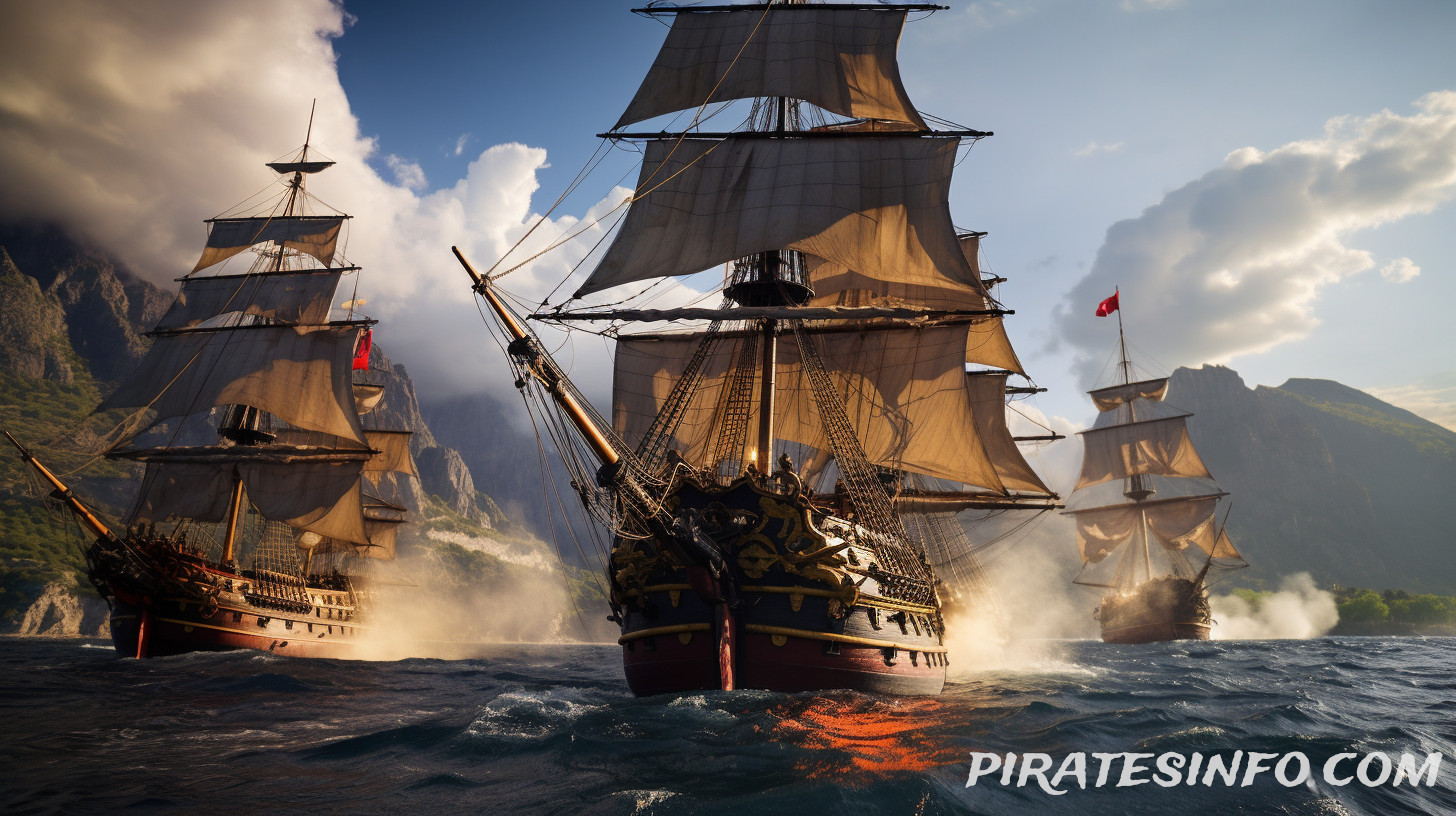
The Legends and the Lore of Pirate Ships:
Picture it: a moonlit night, the creaking of wooden planks beneath your feet, the distant call of seagulls, and the smell of adventure hanging in the salty air. What's a pirate without their ship? A landlubber, that's what! Pirate ships, those vessels of infamy and mystery, are as much a part of pirate legend as parrots and peg legs. But what truth lurks beneath the waves of romanticized tales?
The Fearsome Flags and Fabled Names:
Aye, a pirate ship without a name and a flag be like a sea without waves - incomplete! Pirate ships often boasted names that sent shivers down the spines of merchant sailors and navy vessels alike. Names like the "Black Pearl," the "Queen Anne's Revenge," and the "Jolly Roger" struck terror into the hearts of those who dared cross paths with these nautical rogues.
The flag flying high on the mast was more than just decoration; it was a statement of intent. The notorious Jolly Roger, with its grinning skull and crossbones, signaled that no quarter would be given nor asked. It was like a "Welcome" mat for trouble, inviting other ships to test their mettle against the very essence of piracy.
Shiver Me Timbers and Sea-Worthy Secrets:
Pirate ships weren't your run-of-the-mill vessels; they were finely tuned instruments of chaos and cunning. Many pirates favored modified ships, equipped with secret compartments for hiding treasure and sneaky surprises for unsuspecting foes. Picture this: a seemingly innocent merchant vessel transforms into a den of scallywags, cannons, and cutlasses. Arrr, 'tis a pirate's playground!
Captains and Their Floating Castles:
Every pirate ship had a captain, and every captain had their ship. But don't be fooled by the notion of a dashing, clean-cut leader. Pirate captains were as varied as the fish in the sea. From the suave and charismatic to the grizzled and gritty, each captain brought their own flair to their floating castle.
And let's not forget the crew! A pirate ship's crew was a ragtag bunch, united by their thirst for adventure, riches, and maybe a dash of rebellion. Together, they formed a tight-knit community on the high seas, bound by the shared thrill of piracy and the challenges of life aboard a ship.
Life Aboard the High Seas:
Life on a pirate ship was a whirlwind of excitement, danger, and camaraderie. Imagine swabbing the decks in the early morning mist, feeling the spray of the salty waves as you manned the cannons, and huddling below deck during fierce storms. Pirate ships were not just vessels; they were homes and battlegrounds, where friendships were forged and legends were born.
From the bustling main deck to the cozy confines of the captain's quarters, every corner of a pirate ship had its own story to tell. And those stories, passed down through generations, became the stuff of legend, inspiring tales that would echo through time like the sound of a cannon blast.
So there you have it, fellow adventurers, a glimpse into the captivating world of pirate ships. These floating realms of audacity and audaciousness have left an indelible mark on history and popular culture alike. Raise your grog to the brave souls who sailed them, and remember, even if you're not on the open sea, the spirit of the pirate ship lives on in every daring heart.
Batten down the hatches, ye curious souls, for more tales of the high seas await! Dive deeper into the briny depths of pirate history and lore, and may your thirst for knowledge be as unquenchable as a pirate's thirst for treasure. Yo-ho-ho and a bottle of rum!
Once you've wrapped up here, there's an entire universe of stories awaiting you at our pirates website.
Anatomy of a Pirate Ship: A Seafarer's Guide
Author: Krzysztof Wilczynski Dive into the 17th and 18th centuries, where pirate ships were marvels of design and function. From the watchful crow's nest to the forbidding brig, each part played a pivotal role in their dominance at sea. Beyond sails and cannons, these vessels encapsulated the very essence of pirate life. Discover the intricacies of these iconic ships, as we unravel the tales woven into their timbers and ropes, showcasing maritime mastery at its peak.
Famous Pirate Ships: Wind-Carved Legends
Author: Krzysztof Wilczynski Navigating the tumultuous waters of pirate legend, ships like the Royal Fortune and The Satisfaction cut imposing figures against the horizon. While Captain Morgan's raid with The Satisfaction became rum-worthy tales, Calico Jack's Ranger boasted the fierce duo: Anne Bonny and Mary Read. Then there's Captain Kidd's William, scuttled to hide his misdeeds, and The Delight, representing audacity in piracy. These aren't mere ships; they're legends sailing history's vast seas, leaving indelible trails in their wake.
Pirate Shipwrecks: Soggy Tales of Lost Booty
Author: Krzysztof Wilczynski Dive into history's depths with famed pirate shipwrecks like "Black Sam" Bellamy's Whydah Gally, Blackbeard's Queen Anne's Revenge, and Bannister's Golden Fleece. From Cape Cod to the Caribbean, these sunken treasures, discovered in modern times, offer a captivating look at piracy's golden age. Treasures, cannons, and tales of high-seas adventures resurface, reminding us that beneath every wave lies a story of swashbuckling escapades and quests for unimaginable riches. Dive in, for the tales are as vast as the oceans themselves.
Navigation and Maps: Charting a Pirate Course
Shipboard Combat: Tactics of Pirates
Author: Krzysztof Wilczynski In the turbulent Age of Sail, pirates were more than mere marauders; they were astute naval tacticians. From calculating cannon volleys to orchestrating precise boarding strategies, their shipboard combat was a blend of bravado and brainpower. Engaging in a deadly dance on deck, they used swords, cunning, and even psychological warfare. Beneath their rugged exterior lay master strategists who walked a fine line between maritime glory and a watery grave.
Pirate Flags and Symbols: The Whispered Meanings
Author: Krzysztof Wilczynski The Jolly Roger, the iconic black flag emblazoned with a skull and crossbones, is steeped in maritime mystery. While commonly associated with pirates' lawlessness, whispers suggest "roger" alluded to intimate celebrations or hedonistic acts. Yet, as the line blurs between pirate myths and facts, this provocative theory reminds us of the rich, enigmatic tales that still captivate our imaginations today. Separating truth from legend in piracy is always a thrilling adventure in itself.
Pirate Maritime Battles: When Oceans turned Crimson
Author: Krzysztof Wilczynski In an age of horizon-bound adventures, maritime battles were high-stakes dramas on the azure seas. Pirates, like cunning chess players, strategized with modified ships for swift ambushes. Blackbeard's tactical prowess, Bartholomew Roberts' deceptive flair, and legendary showdowns like Calico Jack's clash, all echo of a time where strategy met swordplay. These naval spectacles, enriched by tales and tactics, have left an indelible mark on history, celebrating pirates not just as treasure hunters, but as maritime maestros of the high seas.
The History and Culture of Pirate Ships
What Pirates Looked for in a Pirate Ship
- Caribbean History
- History Before Columbus
- Colonialism and Imperialism
- Central American History
- South American History
- Mexican History
- American History
- African American History
- African History
- Ancient History and Culture
- Asian History
- European History
- Medieval & Renaissance History
- Military History
- The 20th Century
- Women's History
- Ph.D., Spanish, Ohio State University
- M.A., Spanish, University of Montana
- B.A., Spanish, Penn State University
During the so-called "Golden Age" of piracy (roughly 1700-1725), thousands of pirates terrorized shipping lanes all over the world, particularly in the Atlantic and Indian Oceans. These ruthless men (and women) needed good ships to be able to run down their prey and escape from pirate hunters and navy vessels. Where did they get their ships, and what made for a good pirate craft?
What Was a Pirate Ship?
In one sense, there was no such thing as a “pirate” ship. There was no shipyard where pirates could go and commission and pay for a pirate ship to their specifications. A pirate ship is defined as any vessel whose sailors and crew are engaged in piracy. Thus, anything from a raft or canoe to a massive frigate or man of war could be considered a pirate vessel. Pirates could and did use very small boats, even canoes when nothing else was at hand.
Where Did Pirates Get Their Ships?
Since no one was making ships exclusively for piracy, pirates had to somehow capture existing ships. Some pirates were crewmen on board naval or merchant vessels who took over by mutiny: George Lowther and Henry Avery were two well-known pirate captains who did so. Most pirates simply traded ships when they captured one that was more seaworthy than the one they had been using.
Sometimes brave pirates could steal ships: "Calico Jack" Rackham was cornered by Spanish gunships one night when he and his men rowed over to a sloop the Spanish had captured. In the morning, he sailed away in the sloop while the Spanish warships shot up his old ship, still anchored in the harbor.
What Would Pirates Do With a New Ship?
When pirates got a new ship, by stealing one or by swapping their existing ship out for a better one belonging to their victims, they usually made some changes. They would mount as many cannons on the new ship as they could without significantly slowing her down. Six cannons or so was the minimum that pirates liked to have on board.
The pirates usually changed the rigging or ship’s structure so that the ship would sail faster. Cargo spaces were converted into living or sleeping quarters, as pirate ships usually had more men (and less cargo) onboard than merchant's vessels.
What Did Pirates Look for in a Ship?
A good pirate ship needed three things: it needed to be seaworthy, fast, and well-armed. Seaworthy ships were especially necessary for the Caribbean, where devastating hurricanes are a yearly occurrence. Since the best ports and harbors were usually off-limits to pirates, they often had to ride out storms at sea. Speed was very important: if they could not run down their prey, they would never capture anything. It was also necessary to outrun pirate hunters and navy ships. They needed to be well-armed in order to win fights.
Blackbeard , Sam Bellamy, and Black Bart Roberts had massive gunboats and were very successful. Smaller sloops had advantages as well, however. They were quick and could enter shallow inlets to hide from searchers and evade pursuit. It was also necessary to "careen" ships from time to time. This is when the ships were intentionally beached so that the pirates could clean the hulls. This was easy to do with smaller ships but a real chore with larger ones.
- Famous Pirate Ships
1. Blackbeard's Queen Anne's Revenge
In November of 1717, Blackbeard captured La Concorde, a massive French slaving ship. He renamed her Queen Anne's Revenge and refitted her, mounting 40 cannons on board. The Queen Anne's Revenge was one of the most powerful ships around at the time and could go toe-to-toe with any British warship. The ship ran aground (some say Blackbeard did it intentionally) in 1718 and sank. Researchers believe they have found it in the waters off of North Carolina . Some items, such as an anchor, bell, and spoon have been found and are displayed in museums.
2. Bartholomew Roberts' Royal Fortune
Most of Roberts ' flagships were named Royal Fortune, so sometimes the historical record gets a little confusing. The largest was a former French man of war that the pirate had refitted with 40 cannons and manned by 157 men. Roberts was aboard this ship during his fateful final battle in February of 1722
3. Sam Bellamy's Whydah
The Whydah was a massive merchant ship captured by Bellamy on her maiden voyage in 1717. The pirate modified her, mounting 26 cannons on board. She was shipwrecked off of Cape Cod not long after she was taken, however, so Bellamy did not do much damage with his new ship. The wreck has been found, and researchers have found some very interesting items which have allowed them to learn more about pirate history and culture.
Cawthorne, Nigel. A History of Pirates: Blood and Thunder on the High Seas. Edison: Chartwell Books, 2005.
Cordingly, David. New York: Random House Trade Paperbacks, 1996
Defoe, Daniel ( Captain Charles Johnson ). A General History of the Pyrates. Edited by Manuel Schonhorn. Mineola: Dover Publications, 1972/1999.
Konstam, Angus. "The Pirate Ship 1660-1730." New Vanguard, First Edition edition, Osprey Publishing, June 20, 2003.
Konstam, Angus. The World Atlas of Pirates. Guilford: the Lyons Press, 2009
Woodard, Colin. The Republic of Pirates: Being the True and Surprising Story of the Caribbean Pirates and the Man Who Brought Them Down. Mariner Books, 2008.
- Biography of Pirate Samuel "Black Sam" Bellamy
- The 10 Best Pirate Attacks in History
- The Queen Anne's Revenge: Blackbeard's Mighty Pirate Ship
- Facts About Anne Bonny and Mary Read, Fearsome Female Pirates
- Biography of Anne Bonny, Irish Pirate and Privateer
- Biography of Henry Avery, the Most Successful Pirate
- Weapons Used by Pirates
- Blackbeard for Kids
- 10 Facts About Pirate "Black Bart" Roberts
- The Young U.S. Navy Battled North African Pirates
- Little Known Facts About Blackbeard the Pirate
- Biography of 'Black Bart' Roberts, Highly Successful Pirate
- Biography of Stede Bonnet, the Gentleman Pirate
- Zheng Shi, Pirate Lady of China
- Biography of Edward 'Blackbeard' Teach, Pirate
17 Sailboat Types Explained: How To Recognize Them
Ever wondered what type of sailboat you're looking at? Identifying sailboats isn't hard, you just have to know what to look for. In this article, I'll help you.
Every time I'm around a large number of sailboats, I look around in awe (especially with the bigger ones). I recognize some, but with most of them, I'll have to ask the owner. When they answer, I try to hide my ignorance. The words don't make any sense!
So here's a complete list with pictures of the most common sailboat types today. For each of them, I'll explain exactly where the name comes from, and how you can recognize it easily.

So here's my list of popular sailboat types, explained:
Bermuda sloop, sailing hydrofoil, dutch barge, chinese junk, square-rigged tall ship, in conclusion, how to recognize any sailboat.
Before we get started, I wanted to quickly explain what you should look for when you try to identify a sailboat.
The type of sailboat is always determined by one of these four things:
- The type of hull
- The type of keel
- The number of masts
- And the type of sails and rig
The hull is the boat's body. There are basically three hull types: monohull, catamaran, and trimaran. Simply said: do I see one hull, two hulls (catamaran) or three hulls (trimaran)? Most sailboats are monohulls.
Next, there is the keel type. The keel is the underwater part of the hull. Mostly, you won't be able to see that, because it's underwater. So we'll leave that for now.
The sail plan
The last factor is the number of masts and the sail plan. The sail plan, simply put, is the number of sails, the type of sails, and how the sails are mounted to the masts (also called rigging ).
Sailboat are mostly named after the sail plan, but occasionally, a sail type is thrown in there as well.
So now we know what to pay attention to, let's go and check out some sailboats!

Dinghies are the smallest and most simple sailboats around.
They are your typical training sailboats. Small boats with an open hull, with just one mast and one sail. Perfect for learning the ways of the wind.
On average, they are between 6 and 20 ft long. Mostly sailed single-handed (solo). There's no special rigging, just the mainsail. The mainsail is commonly a Bermuda (triangular) mainsail. Dinghies have a simple rudder stick and no special equipment or rigging.
Dinghies are great for learning how to sail. The smaller the boat, the better you feel the impact of your trim and actions.
How to recognize a sailing dinghy:
- short (8ft)
- one Bermuda sail
- open hull design
- rudder stick
Common places to spot them: lakes, near docks

If you'd ask a kid to draw a sailboat, she'll most probably draw this one. The Bermuda Sloop is the most popular and most common sailboat type today. You'll definitely recognize this one.
How to recognize a Bermuda Sloop:
- triangular mainsail (called a Bermuda sail)
- a foresail (also called the jib)
- fore-and-aft rigged
- medium-sized (12 - 50 ft)
Fore-and-aft rigged just means "from front to back". This type of rigging helps to sail upwind.
Any sailboat with one mast and two sails could still be a sloop. Even if the sails are another shape or rigged in another way. For example, here's a gaff-rigged sloop (more on the gaff rig later):

If you want to learn all about sail rigs, check out my full Guide to Understanding Sail Rig Types here. It has good infographics and explains it in more detail
The Bermuda sloop has a lot of advantages over other sailboat types (which is why it's so popular):
- the Bermuda rig is very maneuverable and pretty fast in almost all conditions
- it's really versatile
- you can sail it by yourself without any problems
- it's a simple setup
Common places to spot a sloop: everywhere. Smaller sloops are more common for inland waters, rivers, and lakes. Medium-sized and large sloops are very popular cruising boats.

Cutters have one mast but three or more sails. Most cutters are Bermuda rigged, which means they look a lot like sloops.
How to recognize a cutter:
- looks like a sloop
- two or more headsails instead of one
- commonly one mast
- sometimes an extra mast with mainsail
Cutters have more sail area, which makes them faster, but also harder to sail single-handed. There's also more strain on the mast and rigging.
Common places to spot a cutter: everywhere. Cutters are very popular for cruising.
They mostly have a Bermuda rig, which means triangular sails. But there are also gaff cutters and naval cutters, and some have two masts.
Here's an example of a two-masted naval cutter with an extra gaff mainsail and top gaff:

The Hydrofoil is a pretty new sailboat design. It's a racing sailboat with thin wing foils under the hull. These lift up the hull, out of the water, reducing the displacement to nearly zero. The foils create downforce and keep it from lifting off entirely.
This makes the hydrofoil extremely fast and also impressive.
The hydrofoil refers to the keel type. There are both monohull and multihull hydrofoils.
How to recognize a hydrofoil:
- it flies above the waterline and has small fins
Common places to spot a hydrofoil: at racing events

Famous catamaran: La Vagabonde from Sailing La Vagabonde
A catamaran is a type of cruising and racing multihull sailboat with two hulls. The hulls are always the same size.
Most catamarans have a standard Bermuda rig. The catamaran refers to the hull, so it can have any number of masts, sails, sail types and rig type.
How to recognize a catamaran:
- any boat with two hulls is called a catamaran
Common places to spot catamarans: coastal waters, The Caribbean, shallow reefs
The advantages of a catamaran: Catamarans heel less than monohulls and are more buoyant. Because of the double hull, they don't need as deep a keel to be stable. They have a smaller displacement, making them faster. They also have a very shallow draft. That's why catamarans are so popular in the Caribbean, where there's lots of shallow water.
Catamarans are nearly impossible to capsize:
"Compared with a monohull, a cruising catamaran sailboat has a high initial resistance to heeling and capsize—a fifty-footer requires four times the force to initiate a capsize than an equivalent monohull." Source: Wikipedia

How to recognize a trimaran:
- any boat with three hulls is called a trimaran
Trimarans have three hulls, so it's a multi-hull design. It's mostly a regular monohull with two smaller hulls or floaters on the sides. Some trimarans can be trailered by winching in the auxiliary hulls, like this:

This makes them very suitable for long-term cruising, but also for regular docking. This is great for crowded areas and small berths, like in the Mediterranean. It sure is more cost-effective than the catamaran (but you also don't have the extra storage and living space!).
Common places to spot Trimarans: mostly popular for long-term cruising, you'll find the trimaran in coastal areas.

Gaffer refers to gaff-rigged, which is the way the sails are rigged. A gaff rig is a rectangular sail with a top pole, or 'spar', which attaches it to the mast. This pole is called the 'gaff'. To hoist the mainsail, you hoist this top spar with a separate halyard. Most gaffers carry additional gaff topsails as well.
Gaff rigs are a bit less versatile than sloops. Because of the gaff, they can have a larger sail area. So they will perform better with downwind points of sail. Upwind, however, they handle less well.
How to recognize a gaffer:
- sail is rectangular
- mainsail has a top pole (or spar)
Since a gaffer refers to the rig type, and not the mast configuration or keel type, all sailboats with this kind of rigging can be called 'gaffers'.
Common places to spot a gaffer: Gaffers are popular inland sailboats. It's a more traditional rig, being used recreationally.

Schooners used to be extremely popular before sloops took over. Schooners are easy to sail but slower than sloops. They handle better than sloops in all comfortable (cruising) points of sail, except for upwind.

How to recognize a schooner:
- mostly two masts
- smaller mast in front
- taller mast in the back
- fore-and-aft rigged sails
- gaff-rigged mainsails (spar on top of the sail)
Common places to spot a schooner: coastal marinas, bays

How to recognize a ketch:
- medium-sized (30 ft and up)
- smaller mast in back
- taller mast in front
- both masts have a mainsail
The ketch refers to the sail plan (mast configuration and type of rig). Ketches actually handle really well. The back mast (mizzenmast) powers the hull, giving the skipper more control. Because of the extra mainsail, the ketch has shorter masts. This means less stress on masts and rigging, and less heel.
Common places to spot a ketch: larger marinas, coastal regions

How to recognize a yawl:
- main mast in front
- much smaller mast in the back
- back mast doesn't carry a mainsail
The aft mast is called a mizzenmast. Most ketches are gaff-rigged, so they have a spar at the top of the sail. They sometimes carry gaff topsails. They are harder to sail than sloops.
The yawl refers to the sail plan (mast configuration and type of rig).
Common places to spot a yawl: they are not as popular as sloops, and most yawls are vintage sailboat models. You'll find most being used as daysailers on lakes and in bays.

Dutch Barges are very traditional cargo ships for inland waters. My hometown is literally littered with a very well-known type of barge, the Skutsje. This is a Frisian design with leeboards.
Skutsjes don't have a keel but use leeboards for stability instead, which are the 'swords' or boards on the side of the hull.
How to recognize a Dutch Barge:
- most barges have one or two masts
- large, wooden masts
- leeboards (wooden wings on the side of the hull)
- mostly gaff-rigged sails (pole on top of the sail, attached to mast)
- a ducktail transom

The clipper is one of the latest sailboat designs before steam-powered vessels took over. The cutter has a large cargo area for transporting cargo. But they also needed to be fast to compete with steam vessels. It's a large, yet surprisingly fast sailboat model, and is known for its good handling.
This made them good for trade, especially transporting valuable goods like tea or spices.
How to recognize a Clipper:
- mostly three masts
- square-rigged sails
- narrow but long, steel hull
Common places to spot a clipper: inland waters, used as houseboats, but coastal waters as well. There are a lot of clippers on the Frisian Lakes and Waddenzee in The Netherlands (where I live).

This particular junk is Satu, from the Chesapeake Bay Area.
The Chinese Junk is an ancient type of sailboat. Junks were used to sail to Indonesia and India from the start of the Middle Ages onward (500 AD). The word junk supposedly comes from the Chinese word 'jung', meaning 'floating house'.
How to recognize a Chinese junk:
- medium-sized (30 - 50 ft)
- large, flat sails with full-length battens
- stern (back of the hull) opens up in a high deck
- mostly two masts (sometimes one)
- with two mainsails, sails are traditionally maroon
- lug-rigged sails
The junk has a large sail area. The full-length battens make sure the sails stay flat. It's one of the flattest sails around, which makes it good for downwind courses. This also comes at a cost: the junk doesn't sail as well upwind.

The cat rig is a sail plan with most commonly just one mast and one sail, the mainsail.
Most sailing dinghies are cats, but there are also larger boats with this type of sail plan. The picture above is a great example.
How to recognize a cat rig:
- smaller boats
- mostly one mast
- one sail per mast
- no standing rigging
Cat-rigged refers to the rigging, not the mast configuration or sail type. So you can have cats with a Bermuda sail (called a Bermuda Cat) or gaff-rigged sail (called a Gaff Cat), and so on. There are also Cat Ketches and Cat Schooners, for example. These have two masts.
The important thing to know is: cats have one sail per mast and no standing rigging .
Most typical place to spot Cats: lakes and inland waters

Famous brig: HMS Beagle (Charles Darwin's ship)
A brig was a very popular type of small warship of the U.S. navy during the 19th century. They were used in the American Revolution and other wars with the United Kingdom. They carry 10-18 guns and are relatively fast and maneuverable. They required less crew than a square-rigged ship.
How to recognize a brig:
- square-rigged foremast
- mainmast square-rigged or square-rigged and gaff-rigged

How to recognize a tall ship:
- three or four masts
- square sails with a pole across the top
- multiple square sails on each mast
- a lot of lines and rigging
Square-rigged ships, or tall ships, are what we think of when we think of pirate ships. Now, most pirate ships weren't actually tall ships, but they come from around the same period. They used to be built from wood, but more modern tall ships are nearly always steel.
Tall ships have three or four masts and square sails which are square-rigged. That means they are attached to the masts with yards.
We have the tall ship races every four years, where dozens of tall ships meet and race just offshore.
Most common place to spot Tall Ships: Museums, special events, open ocean

This is a bonus type since it is not very common anymore. As far as I know, there's only one left.
The Trabaccolo is a small cargo ship used in the Adriatic Sea. It has lug sails. A lug rig is a rectangular sail, but on a long pole or yard that runs fore-and-aft. It was a popular Venetian sailboat used for trade.
The name comes from the Italian word trabacca , which means tent, referring to the sails.
How to recognize a Trabaccolo:
- wide and short hull
- sails look like a tent
Most common place to spot Trabaccolo's: the Marine Museum of Cesenatico has a fully restored Trabaccolo.
So, there you have it. Now you know what to look for, and how to recognize the most common sailboat types easily. Next time you encounter a magnificent sailboat, you'll know what it's called - or where to find out quickly.

I loved this article. I had no idea there were so many kinds of sailboats.
i have a large sailing boat about 28ft. that im having a difficult time identifying. it was my fathers & unfortunately hes passed away now. any helpful information would be appreciated.
Jorge Eusali Castro Archbold
I find a saleboat boat but i can find the módem…os registré out off bru’x, and the saleboat name is TADCOZ, can you tell me who to go about this matter in getting info.thank con voz your time…
Leave a comment
You may also like, guide to understanding sail rig types (with pictures).
There are a lot of different sail rig types and it can be difficult to remember what's what. So I've come up with a system. Let me explain it in this article.

The Ultimate Guide to Sail Types and Rigs (with Pictures)

How Much Sailboats Cost On Average (380+ Prices Compared)
Own your first boat within a year on any budget.
A sailboat doesn't have to be expensive if you know what you're doing. If you want to learn how to make your sailing dream reality within a year, leave your email and I'll send you free updates . I don't like spam - I will only send helpful content.
Ready to Own Your First Boat?
Just tell us the best email address to send your tips to:
Back to list of R-Boats
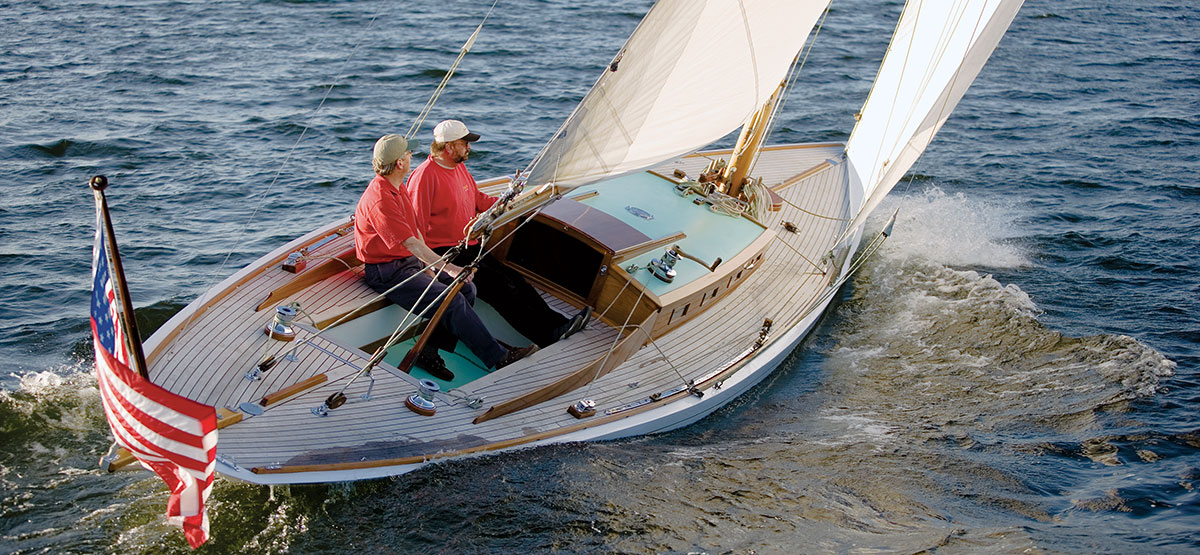
Specifications
Measurements
Personal tools

Welcome to the Pirate101 Wiki
The largest and most comprehensive pirate101 wiki for all of your pirate101 needs guides, pets, companions, ships, quests, combat, housing, creatures, npcs and more, as part of the largest pirate101 community and pirate101 forums online, this is a community wiki that anyone can contribute to, click here to make a free account to edit this wiki and the related forums at pirate101 central..
- Pirate Classes
There is currently no text in this page. You can search for this page title in other pages, or search the related logs , but you do not have permission to create this page.
Pirate101 Wiki
- Recent Changes
- Current Contest
- Page Writing
- Code Editing
- Housing Items
- First Gen Pets
- Hybrid Pets
- Pet Abilities
- Basic Gameplay
- Creating a Character
- Level Chart
- Companion Orders
- Training Pets
- Snack Classes
- Chapter Pricing
- Skull Island
- Dragonspyre
- All Creatures
- Storyline Quests
- Side Quests
- Quests by Chapter
- Buccaneer Quests
- Musketeer Quests
- Privateer Quests
- Swashbuckler Quests
- Witchdoctor Quests
- Companion Quests
- Practice Point Quests
- Training Point Quests
- Accessories
- Bought Items
- Dropped Items
- Quest Reward Items
- Promotional Items
- Holiday Items
- Retired Accessories
- Retired Boots
- Retired Hats
- Retired Outfits
- Retired Weapons
- Retired Gift Cards
- ProvidesAbility Table
- Booster Packs
- Wall Hangings
- Walls and Floors
- Decorations
- Musical Scrolls
- Booster Pack
- Dropped Housing
- Quest Reward Housing
- Promotional Housing
- Retired Housing
- Figure Heads
- Bought Ship Items
- Dropped Ship Items
- Quest Reward Ship Items
- Holiday Ship Items
- Epic Talents
- Swashbuckler
- Witchdoctor
- Ship Powers
- By How Acquired
- Free Any Class
- First Generation Pets
- Pet Wranglin'
- Ranked PvP Pets
- Special Pets
- Holiday Pets
- by Boosted Stat
- by How Acquired
- Crowns Snacks
- Pet Talents
- Morph Cost Form
- Item Query Form
- Edit this Menu
- Admin Needed
- Candidates for Deletion
- Disambiguations
- Image Stubs
- Outdated Articles
- User-Rights
- Deleted Pages
- What links here
- Special pages
- Printable version
- Browse properties
vBSSO Login Form
- About Pirate101 Wiki
Hijacked Bangladesh-flagged ship released after $5 million ransom paid, say Somali pirates
From reuters.
Somali pirates released a hijacked ship, MV Abdullah, and its crew of 23 early on Sunday after a $5 million ransom was paid, according to two pirates.
“The money was brought to us two nights ago as usual… we checked whether the money was fake or not. Then we divided the money into groups and left, avoiding the government forces,” Abdirashiid Yusuf, one of the pirates, told Reuters.
He added the ship had been released with all its crew.
Somalia government officials did not respond to a request for comment.
The MV Abdullah, a Bangladesh-flagged bulk carrier – a type of merchant ship used to transport large amounts of cargo – was hijacked in March as it was heading from Mozambique to the United Arab Emirates.
The hijacking happened about 600 nautical miles east of Somalia’s capital Mogadishu.
Somali pirates caused chaos in the waters off the country’s long coastline from about 2008 to 2018. They had been dormant until late last year when pirate activity started to pick up again.
Maritime sources say pirates may be encouraged by a relaxation of security or may be taking advantage of the chaos caused by attacks on shipping by Yemen’s Iran-aligned Houthi group while war rages in Gaza between Israel and the Palestinian militant group Hamas.
Related Articles

Somalia expels Ethiopian ambassador, closes consulates over port deal
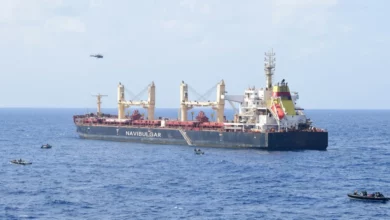
Pirate ship capture showcases India’s world-class special forces, analysts say
Egypt condemns terrorist attack on mogadishu hotel.

Egypt blames Ethiopia’s unwise policies for putting Somalia at risk and stalling GERD talks
Great choice! Your favorites are temporarily saved for this session. Sign in to save them permanently, access them on any device, and receive relevant alerts.
- Sailboat Guide
Pirate 17 (Proctor)
Pirate 17 (Proctor) is a 17 ′ 3 ″ / 5.3 m monohull sailboat designed by Ian Proctor and built by Rydgeway Marine Ltd starting in 1972.

Rig and Sails
Auxilary power, accomodations, calculations.
The theoretical maximum speed that a displacement hull can move efficiently through the water is determined by it's waterline length and displacement. It may be unable to reach this speed if the boat is underpowered or heavily loaded, though it may exceed this speed given enough power. Read more.
Classic hull speed formula:
Hull Speed = 1.34 x √LWL
Max Speed/Length ratio = 8.26 ÷ Displacement/Length ratio .311 Hull Speed = Max Speed/Length ratio x √LWL
Sail Area / Displacement Ratio
A measure of the power of the sails relative to the weight of the boat. The higher the number, the higher the performance, but the harder the boat will be to handle. This ratio is a "non-dimensional" value that facilitates comparisons between boats of different types and sizes. Read more.
SA/D = SA ÷ (D ÷ 64) 2/3
- SA : Sail area in square feet, derived by adding the mainsail area to 100% of the foretriangle area (the lateral area above the deck between the mast and the forestay).
- D : Displacement in pounds.
Ballast / Displacement Ratio
A measure of the stability of a boat's hull that suggests how well a monohull will stand up to its sails. The ballast displacement ratio indicates how much of the weight of a boat is placed for maximum stability against capsizing and is an indicator of stiffness and resistance to capsize.
Ballast / Displacement * 100
Displacement / Length Ratio
A measure of the weight of the boat relative to it's length at the waterline. The higher a boat’s D/L ratio, the more easily it will carry a load and the more comfortable its motion will be. The lower a boat's ratio is, the less power it takes to drive the boat to its nominal hull speed or beyond. Read more.
D/L = (D ÷ 2240) ÷ (0.01 x LWL)³
- D: Displacement of the boat in pounds.
- LWL: Waterline length in feet
Comfort Ratio
This ratio assess how quickly and abruptly a boat’s hull reacts to waves in a significant seaway, these being the elements of a boat’s motion most likely to cause seasickness. Read more.
Comfort ratio = D ÷ (.65 x (.7 LWL + .3 LOA) x Beam 1.33 )
- D: Displacement of the boat in pounds
- LOA: Length overall in feet
- Beam: Width of boat at the widest point in feet
Capsize Screening Formula
This formula attempts to indicate whether a given boat might be too wide and light to readily right itself after being overturned in extreme conditions. Read more.
CSV = Beam ÷ ³√(D / 64)
Drop Keel version: Draft: BU: 2.75’ BD: 4.75’ Disp: 1250 lbs/568 kg Bal.:340 lbs/154 kg
Twin keel version: Draft: 2.25’ Disp.1430 lbs/650 kg Bal.:606 lbs/275 kg
Embed this page on your own website by copying and pasting this code.
- About Sailboat Guide
©2024 Sea Time Tech, LLC
This site is protected by reCAPTCHA and the Google Privacy Policy and Terms of Service apply.

IMAGES
VIDEO
COMMENTS
A Pirate is a type of German sailing dinghy.It was first constructed in 1935, and has no trapeze.The Pirate was designed in 1934 by the German boat builder Carl Martens.The boat was originally manufactured in solid wood, although since the 1960s glass-reinforced plastic, or a sandwich of the two, is also used.According to the regulations for this class of boat, kevlar and carbon fiber are ...
The Pirate is a 'youth' dinghy sailed primarily in Germany where an active class exists to this day. Fiberglass contruction was introduced in 1960. Sailboat Forum
Pirate is a 16′ 4″ / 5 m monohull sailboat designed by Carl Martens and built by Abeking & Rasmussen starting in 1935. ... The Pirate is a 'youth' dinghy sailed primarily in Germany where an active class exists to this day. Fiberglass contruction was introduced in 1960. Suggest Improvements
by WarsoftheWorld. published on 18 August 2021. Pirate ships could come in all shapes and sizes. There were big ones and small ones, sail ships and rowing boats. Some were bristling with cannons; others made do with scary fellas wielding cutlasses and grappling hooks.
R-boat Pirate, fully restored from 1999 to 2005, is the best extant example of the R-class. Pirate also embodies the most advanced skills and talents in both yacht design and construction in the Seattle area in the early twentieth century. Currently. From 1999-2005, The Center for Wooden Boats undertook a restoration of Pirate.
The higher a boat's D/L ratio, the more easily it will carry a load and the more comfortable its motion will be. The lower a boat's ratio is, the less power it takes to drive the boat to its nominal hull speed or beyond. Read more. Formula. D/L = (D ÷ 2240) ÷ (0.01 x LWL)³ D: Displacement of the boat in pounds. LWL: Waterline length in feet
2. Brigantine. A brigantine was a two-masted sailing ship with square sails on the foremast and fore-and-aft rigging on the mainmast. Brigantines were versatile vessels favored by pirates for their maneuverability and ability to navigate shallow waters. They often carried cannons and had ample space for stowing plunder.
In November 1717, Captain Benjamin Hornigold captured a 300-ton frigate in the eastern Caribbean, originally a slave ship named Le Concorde de Nantes. Captain Pirate Hornigold gave this ship to his first mate, Edward Teach - Blackbeard. He renamed the pirate boat "Queen Anne's Revenge", upgraded her, armed with 40 cannons, and carried ...
Pirate Ships and Sailing. The freedom and adventure of piracy on the high seas. Ahoy there, mateys! Set yer course for the high seas of knowledge as we unfurl the sails of curiosity and delve into the captivating world of pirate ships. Avast ye, for this be no ordinary voyage; it's a plunge into the heart of pirate lore and salty tales!
Pirate. 1935 • 5 m. View More. List it for free and it will show up here. Pirate Class Dinghy (GER)
A large three-masted sailing ship with a square rig and usually two or more decks, used from the 15th to the 17th century especially by Spain as a merchant ship or warship. A Spanish galleon (left) firing its cannons at a Dutch warship (right). Cornelis Verbeeck, ca. 1618/1620. By Cornelis Verbeeck (circa 1590-after 1637) - National Gallery ...
Not really. Pirate is the most general of the four terms. Originating with the Greek peiratēs, meaning brigand, it can be applied to a wide range of nautical misbehavior, including coastal raiding and intercepting ships on high seas. Robbery, kidnapping, and murder all qualify as piratical activities, provided there's some water and a boat ...
Famous Pirate Ships. Model Of Queen Ann's Revenge Blackbeard The Pirate's Flagship On Display At The Maritime Research. John Pineda /Getty Images. 1. Blackbeard's Queen Anne's Revenge. In November of 1717, Blackbeard captured La Concorde, a massive French slaving ship. He renamed her Queen Anne's Revenge and refitted her, mounting 40 cannons on ...
Pirate ships could come in all shapes and sizes. There were big ones and small ones, sail ships and rowing boats. Some were bristling with cannons; others ma...
one mast. triangular mainsail (called a Bermuda sail) a foresail (also called the jib) fore-and-aft rigged. medium-sized (12 - 50 ft) Fore-and-aft rigged just means "from front to back". This type of rigging helps to sail upwind. Any sailboat with one mast and two sails could still be a sloop.
The R-class racing yacht Pirate is likely the best known and most well-documented boat at CWB, so her history will not be extensively recounted here.Pirate is significant to northwest maritime history for being the best extant example of the R-class, the adoption of which in this region is a very interesting and complex story.She won the National Championship in that class in 1929.
This boat is perfect for charter events and parties in the Med. The boat does not have cabins but is perfect for pirate boat tours, events, private parties, weddings, business meetings, dinners and new year´s eve. The boat is a class H of group I, so the ship can sail up to 3 miles from the coast and six from the harbour. Español:
Name: Pirate: Sail Number: R11: Designer: L.E. (Ted) Geary: Year Designed: 1926: Builder: Lake Union Dry Dock Company: Year Built: 1926: Class: R-Class: Current ...
Upwind sail area. 45 sq ft (4.2 m 2) [ edit on Wikidata] The P-Class is a type of small single sail dinghy, popular as a training boat for young people in New Zealand. This class is famous for being the sailing trainer vessel for many new entrants into the sport, and virtually every famous New Zealand yachtsman, including Sir Peter Blake and ...
Pirate 15 is a 15′ 1″ / 4.6 m monohull sailboat designed by Joseph V. Puccia and built by Annapolis Sailboat Builders (USA) starting in 1969.
Welcome to the Pirate101 Wiki. The largest and most comprehensive Pirate101 Wiki for all of your Pirate101 needs! Guides, Pets, Companions, Ships, Quests, Combat, Housing, Creatures, NPCs and more!
Somali pirates released a hijacked ship, MV Abdullah, and its crew of 23 early on Sunday after a $5 million ransom was paid, according to two pirates. "The money was brought to us two nights ago as usual… we checked whether the money was fake or not. Then we divided the money into groups and ...
Pirate 17 (Proctor) is a 17′ 3″ / 5.3 m monohull sailboat designed by Ian Proctor and built by Rydgeway Marine Ltd starting in 1972. ... the more easily it will carry a load and the more comfortable its motion will be. The lower a boat's ratio is, the less power it takes to drive the boat to its nominal hull speed or beyond. Read more ...
The Indian Navy's rescue of a commercial ship from pirates off Somalia's coast last weekend shows how Delhi's military has developed special forces capabilities on par with some of the world ...